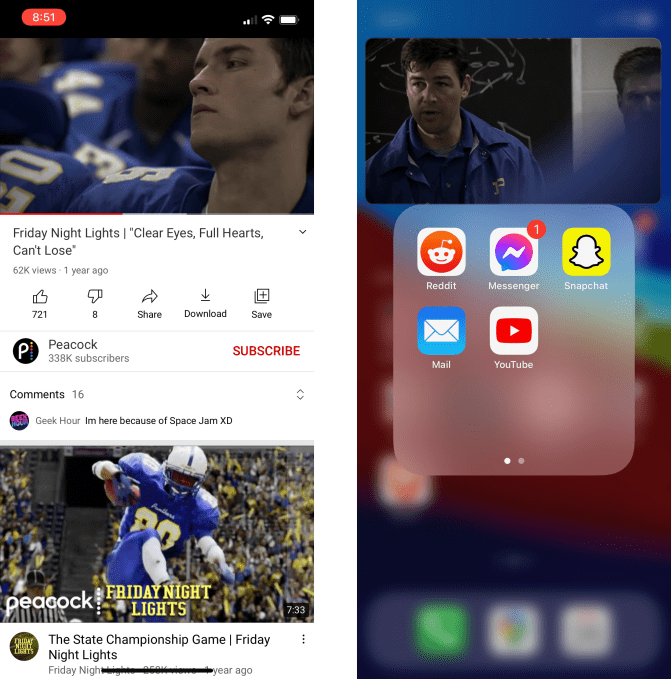- August 26, 2021
- by:
- in: Blog
There’s a lot of advice out there on how to grab people’s attention, but there’s one aspect of marketing that Robert Katai thinks isn’t talked about as often: maintaining their attention.
There’s a lot of advice out there on how to grab people’s attention, but there’s one aspect of marketing that Robert Katai thinks isn’t talked about as often: maintaining their attention. The solution, he says, is a combination of content strategy and positioning.
Based in Romania, Katai is known for his podcasts and speeches covering the gamut of content marketing. A product manager at online graphic design platform Creatopy, he also works with clients as a freelance content strategist, and it is in this capacity that he was recommended to TechCrunch via our growth marketer survey. (If you have growth marketers to recommend, please fill out the survey!)
Katai was recommended by multiple Romanian clients and contacts who vouched for his content strategy prowess, so we were curious to know more. Who is he? And is his advice applicable beyond borders?
The short answer is yes. In a freewheeling interview, Katai spoke about how content marketing should integrate with users’ daily lives, and how content can be repurposed across multiple formats. He also shared some insights on the booming Romanian startup ecosystem.
Editor’s note: The interview below has been edited for length and clarity.
TC: How do you help your clients as a freelancer?
Robert Katai: One of the two things I’m doing is that I’m helping clients with creating their content strategy based on their objective. You can get web traffic, but you can also create a message and build the brand. You don’t have to start at the beginning; You can rebuild the brand later.
For instance, I’m working with a Romanian outsourcing company that started in 1993. They pioneered this industry in our city of Cluj-Napoca, but lately they started to realize that they should be more attractive from a sales as well as from an employee perspective. So I worked with them to perform an internal audit to see why employees love the company, why they leave, why they stay and what they want from the company.

Image Credits: Robert Katai.
From there, I got to the idea that they needed to reshape their brand to not just have people notice them but to also maintain their attention. And here comes the content: I started an ambassador program, because there are people outside of the company who love it.
I also recommended they create an internal print magazine. It’s a very well-designed magazine that their 200 to 300 employees can take home and read. It’s not just about the job; it’s also about their hobbies, things to do in the city and some thought leadership articles that can inspire them to have a better life.
What’s the second way you are helping clients?
Apart from content strategy, I’m working with clients on their positioning for their audience, community and market, but also sometimes in terms of employer branding. Content can be a bridge between the two ways I am helping clients, because I’m using a lot of content marketing here and not focusing only on performance or growth marketing hacks. I’m helping them understand that if they want to establish a memorable, long-lasting brand in the market, they have to make content marketing part of their life.
If they want to reposition themselves in the industry, they need to say: Okay, these are the kinds of content we have to create for our goals; who will amplify the content, who will connect with us, and who will consume the content. Today, content creation is free — everybody can do it. The hard part is how you distribute and amplify that. And here’s how I can help the startups: Make a big piece of content and repurpose it in several small pieces; get it in front of people so that the brand is on their minds.
Have you worked with a talented individual or agency who helped you find and keep more users?
Respond to our survey and help other startups find top growth marketers they can work with!
How can brands achieve that top-of-mind status?
We all know that there are four kinds of content: Text, video, pictures and audio. These four formats never die. The platform can change, but the format will stay the same. A video can be an Instagram Reel, a documentary or something else, but it’s a video. The same goes for a photo. So the content strategy I’m working with is how brands can use that content ecosystem.
When I work with my clients — and also with Creatopy where I’m a product marketer — I recommend them to use content to build their brand and be visible to their users every day in their feeds. Every morning, when their customers are waking up and checking their phones, they don’t open a newspaper. They will open Twitter, Instagram or Facebook, and maybe then when they get out of the bathroom and make coffee, they will open YouTube and connect with Alexa.
I really believe that brands should create content that can just be in the mind of the user. Snackable content, Reels, TikTok … It doesn’t matter what we call it.
You also talked about repurposing content. Can you explain that?
Let’s take the interview you’ve done with Peep Laja. You could have recorded it as a video. And he covered several topics, so you could have several short videos — 30 seconds, three minutes, whatever. You can publish them daily on your site or social media channels with a comment that says, “Here’s the link to the full article.” But remember that on LinkedIn, that link will need to go into the comments section, not the post itself.
You can also have a longer video that you can publish on social media or on Wistia, asking people to give their email — so now you also have subscribers.
Then the second type of content you can create is audio. You already have it from the recording. You don’t have to publish the full 45-minute conversation, but you can have a five-minute audio clip, and again link to the articles.
Now we have video and audio, but what if you also designed quotes with his headshot and messaging? If it’s part of a series, you should also give it a name.
And it’s not just motivational; it’s educational, too, so you should take these quotes and create carousels for Instagram and LinkedIn. The first slide should grab attention — it can be a question. The second slide can be a link to the interview so that even if people don’t click it, it will be on their minds. Then you can have slides with insights.
The last slide will always be a call to action: Asking people to share, comment or save it for later — it’s the new currency on Instagram! And once you have your Instagram carousel, you create a PDF and publish it on LinkedIn.
So now you have five formats of content from one piece of content.
Wow, how much do we owe you?! Just kidding, we actually do some of that for the Equity podcast, for instance. Now, what other advice do you have for startups?
I’m a big advocate of documenting the process. Just imagine if Mark Zuckerberg had done that and you could read how he launched Facebook and so on. Noah Kagan is doing that right now. I think startup founders should do it, not just from the PR and marketing perspective, but for their audience. Even if your audience is not paying for your product right now, they are staying with you and giving your brand an essence in the industry.
Just think about what Salesforce is doing right now: They launched Salesforce+, which is like Netflix for B2B. It’s to get the attention of professionals and also maintain it, and I believe this is the currency of the big companies today: People’s attention.
Do you work with any startups in Romania? And do you have any impressions to share on the Romanian startup ecosystem?
Yes, I help a few Romanian startups with their content marketing and positioning. Sometimes other startups email me with questions, so I help them, too, but I don’t charge for email advice. I work with the ones that are looking for a long-term or project-based collaboration.
Startup founders here in Romania are curious, and very courageous to experiment even if it won’t necessarily work. And Romanian startups are very smart. For instance, Planable is doing a great job with content, social media and positioning. We also have social media analytics company Socialinsider, which this year launched virtual events, and TypingDNA, which wants to get rid of needing to log in with passwords and was founded by a former colleague.
I also found that the founders here work harder than their teams and don’t just leave others do the work — at least the ones I have met. We have several startup events in Romania: How to Web, and Techsylvania here in Transylvania.
I don’t like this name, but people say that Cluj-Napoca is the “Silicon Valley of Romania.” Lots of startups have been launched here, but the city that is getting more and more traction is Oradea, where the bet on education is paying off.
(If you are a tech startup founder or investor in Cluj or Oradea, fill in TechCrunch’s European Cities Survey 2021.)






